Personality psychology, a specific field of psychology that has seen rapid development over the last century, has attracted a large following and abundance of research due to its intriguing focus: ourselves. Simply put, personality is the factor that sets us apart and defines who we are. More specifically, it is the combination of individual differences that originate from our social and cultural experiences throughout our lives – although some psychologists propose that our genetic make-up also contributes to our personality traits.
In this list, we detail the 25 most popular personality tests in the world, from the ever-iconic Rorschach inkblot test to the lesser-known but commonly given Minnesota Multiphasic Personality Inventory. To properly take these tests and get a valid result, you’ll have to pay, but feel free to look for reduced versions of them online; just know they likely won’t be entirely valid. If you’re interested to learn more about yourself (and the personality tests which will help you do that), check out this list of 25 Different Personality Tests To Help You Discover Yourself.
NB: It should be known many of these tests are seriously challenged by psychologists. While nearly all have been developed by the profession, many people raise alarms about the tests’ validity and reliability. Rather than go in depth about all the criticisms, we’ve chosen to focus on the tests themselves.
Cover Image CC: Vic via Flickr
Woodworth Personal Data Sheet
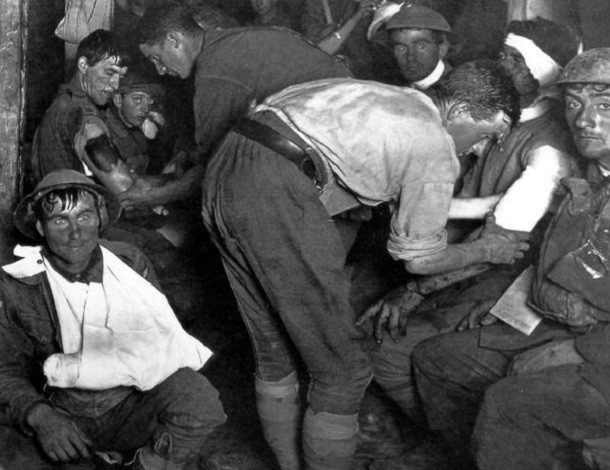 Source: Kaplan, R., & Saccuzzo, D. (2012). Psychological testing: Principles, applications, and issues., Image: Wikipedia
Source: Kaplan, R., & Saccuzzo, D. (2012). Psychological testing: Principles, applications, and issues., Image: Wikipedia Also known as the Woodworth Psychoneurotic Inventory, the Woodworth Personal Data Sheet was the first popular personality test. Originally developed during World War I to test new recruits’ susceptibility to shell shock, the test was never truly used for its original purpose; rather, it was used for general psychological understanding. As psychology was still a nascent profession at the time, most other personality tests of the era were only modifications of the WPDS.
Eysenck Personality Questionnaire
 Source: Manual of the Eysenck Personality Questionnaire, Image: Wikipedia
Source: Manual of the Eysenck Personality Questionnaire, Image: Wikipedia The Eysenck Personality Questionnaire is unique on this list because it purports that personality is genetically based. Thus, our personality comes from our genes and is mostly set when we are born. The test measures an individuals’ extraversion, neuroticism, and psychoticism and attributes a variety of subtraits to each.
Thematic Apperception Test
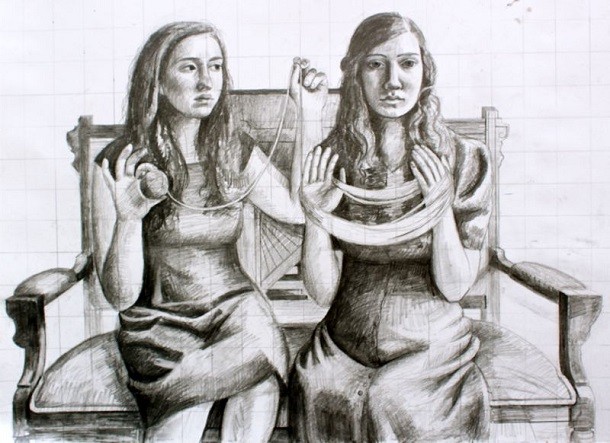 Source: Murray, H. A. (1943). Thematic Apperception Test manual., Image: studiobeerhorst via Flickr
Source: Murray, H. A. (1943). Thematic Apperception Test manual., Image: studiobeerhorst via Flickr Believing people interpret ambiguous situations through the combination of past experiences and current desires, the TAT (Thematic Apperception Test) was initially developed to screen military servicemen and women who may be turned by the enemy. (It’s still used to screen military personnel in India.) After being shown an ambiguous image of a person, the test-taker is asked to create a story which would later be interpreted by the psychologist.
Personality and Preference Inventory (PAPI)
 Source: Anderson, P, Lewis, C. and Avenell, J (1993) A Feasibility Study into the Cultural and Linguistic Bias of Psychometric Testing., Image: Wikimedia
Source: Anderson, P, Lewis, C. and Avenell, J (1993) A Feasibility Study into the Cultural and Linguistic Bias of Psychometric Testing., Image: Wikimedia The PAPI (Personality and Preference Inventory) is a personality test designed primarily for companies to screen candidates for open positions. It uses two scales – the Needs scale to determine a person’s inherent tendencies and the Roles scale to determine how a person perceives him or herself in the workplace – to help in career development and diagnose work problems.
Myers-Briggs Type Indicator
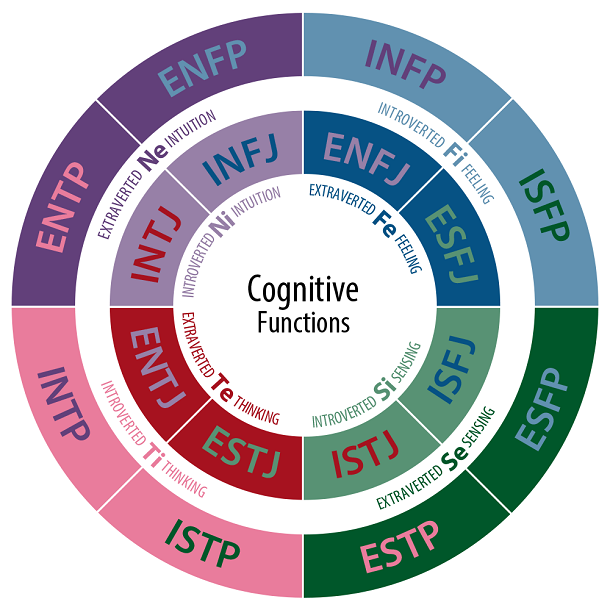 Source: The Myers-Briggs Foundation, Image: Wikipedia
Source: The Myers-Briggs Foundation, Image: Wikipedia Easily the most well-known personality test in the world, the MBTI (Myers-Briggs Type Indicator) is a self-reported questionnaire aiming to determine a person’s preferences on four spectrums: sensation, intuition, feeling, and thinking. Based on Carl Jung’s work on personality traits, the test was developed by Katharine Cook Briggs and daughter Isabel Briggs Myers. Since it’s so culturally popular, we do feel compelled to mention the test has proven to be mostly unreliable and invalid for three of the four spectrums. Only the scale which measures extraversion and introversion (meant, in this case, as where somebody derives their energy from) has shown sufficient accuracy.
Strength Deployment Inventory
 Source: Princeton OHR, Image: Wikipedia
Source: Princeton OHR, Image: Wikipedia The Strength Deployment Inventory can be a powerful way to improve relationships and determine leadership potential. It works by determining a person’s Motivational Value System, finding how they respond both when things are going well and when they experience opposition. It hits on a person’s motivations and values rather than just their behaviors.
True Colors
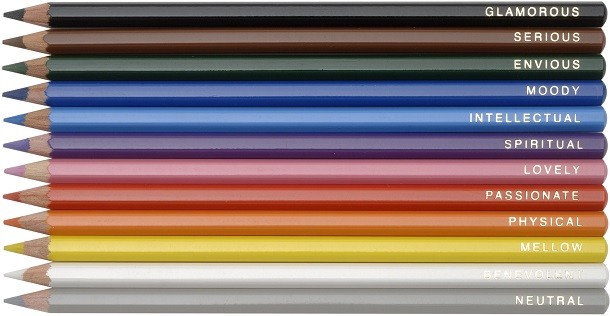 Source: Psychology Press, Image: Wikimedia
Source: Psychology Press, Image: Wikimedia True Colors may be the easiest personality test to understand on this list. Based on temperament theory, the test categorizes people into four primary personality types: gold for pragmatic planners; green for independent thinkers; then orange for action-oriented people; and, blue for people-oriented people. Each color gets a rating and a person’s two strongest colors make up their core temperament.
Big Five Personality Test
 Source: American Psychologist, Image: Wikipedia
Source: American Psychologist, Image: Wikipedia Though not explicitly a personality test, the Big Five personality traits (AKA Five Factor Model) are one of the best known models, forming the groundwork for many tests. The model divides personality into five primary areas, known by the acronym OCEAN: openness to experience, conscientiousness, extraversion, agreeableness, and neuroticism. Each factor has a variety of related qualities; for example, people high in conscientiousness generally show high self-discipline and a strong desire to follow a plan.
16PF Questionnaire
 Source: Karson, W & J. W O'Dell.(1976). A Guide to the Clinical Use of the 16PF., Image: Pixabay
Source: Karson, W & J. W O'Dell.(1976). A Guide to the Clinical Use of the 16PF., Image: Pixabay The 16PF Questionnaire (Sixteen Personality Factor Questionnaire) was the result of decades of work primarily by Raymond B. Cattell. The test used new statistical methods to derive 16 primary personality factors and 5 secondary factors based off the Five Factor Model (#18). Some of the primary factors include warmth, social boldness, and liveliness. The test has been used across a variety of areas, including for career advice and marriage compatibility.
Strengths Finder
 Source: Rath, Tom (2007). StrengthsFinder 2.0., Image: ctep via Flickr
Source: Rath, Tom (2007). StrengthsFinder 2.0., Image: ctep via Flickr Strengths Finder has been one of the most unique personality tests to appear over the past century. The test focuses on people’s strengths over weaknesses and purports that knowing the weight of these 32 strengths can help explain why someone exceeds in a certain field or position or picks up a skill more easily. Normally, a person’s top five themes are highlighted – for example, Empathy, Includer, Input, Relator, and Strategic.
Minnesota Multiphasic Personality Inventory
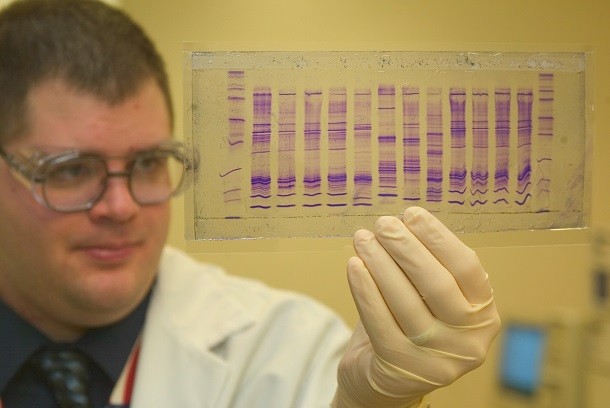 Source: Scandinavian Journal of Psychology, Image: Wikipedia
Source: Scandinavian Journal of Psychology, Image: Wikipedia The MMPI (Minnesota Multiphasic Personality Inventory) is one of the most popular and widely used personality tests out there. The test is able to cross many different areas, in use from deriving forensic evidence for court proceedings to developing therapeutic treatment plans and even to job candidate selection. The MMPI measures people on a variety of scales, including cynicism, mania, and paranoia.
If you’re enjoying this list, check out Link25 (182) – The Type A Personality Edition, particularly number 11.
PRO Development Assessment
 Source: Tai Inc., Image: Wikimedia
Source: Tai Inc., Image: Wikimedia The PRO Development Assessment is a personality test most in use in the workplace. The exam measures an individual’s Missions (motivations & interests), Competencies (abilities & aptitudes), and Style (personality and behavior). As it measures the convergence of these three rather than one individually, the test helps identify and build high performing teams and maximize leadership.
Forté Profile
 Source: The Forté Institute, Image: Pexels
Source: The Forté Institute, Image: Pexels The Forté Profile (AKA Forté Communication Style Profile) finds its roots in lexical theory, believing the words people use can also describe their personality traits. The profile determines a person’s natural communication style (rather than its use in specific instances) and how they are perceived by others. It can also identify a person’s style of logic, ambition, and stamina level.
Caliper Profile
 Source: Business Insider, Image: create-learning via Flickr
Source: Business Insider, Image: create-learning via Flickr The Caliper Profile is a half-century old personality assessment which focuses on workplace skills and aptitude. It measures various crucial skills – such as empathy and assertiveness – to determine if a person is the right fit for a job.
Rorschach Inkblot Test
 Source: Gacano, Carl B.; Meloy, J. Reid (1994). The Rorschach Assessment of Aggressive and Psychopathic Personalities, Image: Wikipedia
Source: Gacano, Carl B.; Meloy, J. Reid (1994). The Rorschach Assessment of Aggressive and Psychopathic Personalities, Image: Wikipedia A popular theme in Hollywood movies, the Rorschach test is used to determine a person’s personality and emotional functioning, often employed to determine underlying thoughts which a person does not want to freely admit. Once a person says what they see in the inkblot, the results are generally analyzed with a mix of mathematical algorithms and psychological interpretation.
Keirsey Temperament Sorter
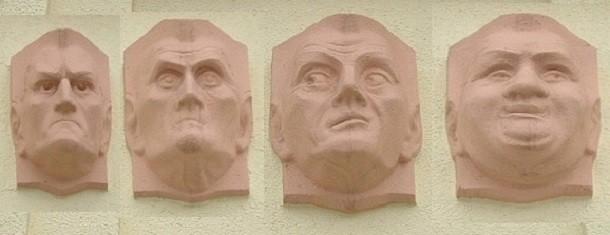 Source: Keirsey.com, Image: Wikipedia
Source: Keirsey.com, Image: Wikipedia The KTS (Keirsey Temperament Sorter) is one of the most widely used personality tests by major corporations. It is based off Hippocrates & Plato’s four humors and measures people against four temperaments: artisans, guardians, idealists, and rationals. The KTS is rather similar to the MBTI (#16) but has a greater focus on behavior over thoughts and feelings and on sensing and intuition over extraversion and intraversion.
The Birkman Method
 Source: Birkman Personality Test, Image: Wikimedia
Source: Birkman Personality Test, Image: Wikimedia The Birkman Method was designed to measure underlying expectations, stress reactions to unmet expectations, social behaviors, and strengths. The test does this by examining a person’s occupational interests, effective behaviors, less-than-effective behaviors (stress behaviors), and interpersonal expectations, all aiming to give a person more clarity on their self-choice/empowerment.
Personality Assessment System
 Source: Krauskopf, Charles J.; David R. Saunders (1994). Personality and Ability: The Personality Assessment System., Image: Wikipedia
Source: Krauskopf, Charles J.; David R. Saunders (1994). Personality and Ability: The Personality Assessment System., Image: Wikipedia The Personality Assessment System is a personality test originally developed by John W. Gittinger during his time at the CIA. The test differs from others in its use of objective subtests, its beliefs that personality is the result of the interaction of various traits, and that behavior is the interaction of both hereditary and environmental factors.
Szondi Test
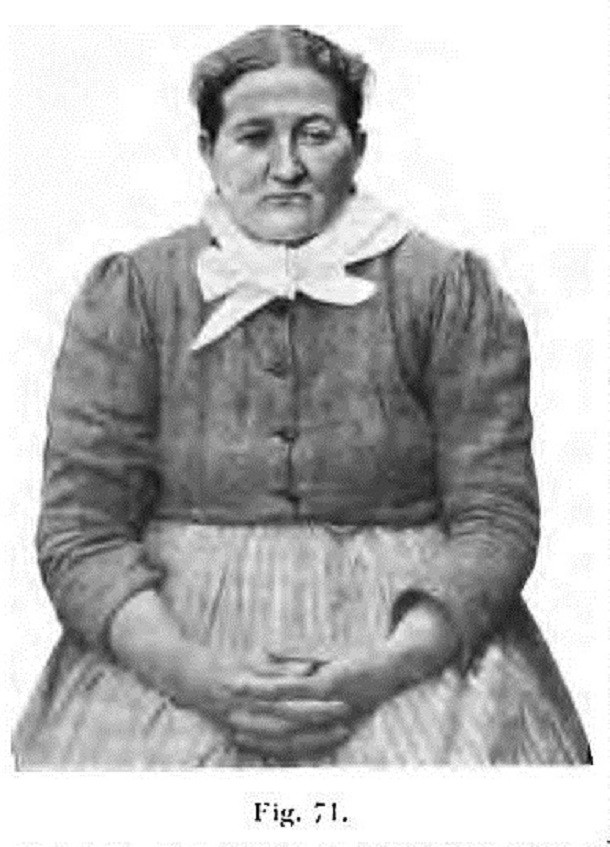 Source: Dictionary of Psychological Science, Image: Wikipedia
Source: Dictionary of Psychological Science, Image: Wikipedia Like the Rorschach test, the Szondi test is a projective personality test, meaning a person responds to ambiguous images to reveal their true sentiments. In the Szondi test, participants are shown 48 images of mental patients and must choose the two most appealing and repulsive images in each group of sadists, katatonics, and manics, among others. The test’s founder, Léopold Szondi, believed people are attracted to those similar to them and will prefer images of such people.
Revised NEO Personality Inventory
 Source: Costa, P. T., Jr., & McCrae, R. R. (1992). NEO PI-R professional manual., Image: anniferrr via Flickr
Source: Costa, P. T., Jr., & McCrae, R. R. (1992). NEO PI-R professional manual., Image: anniferrr via Flickr The NEO PI-R (Revised NEO Personality Inventory) measures people against the Big Five personality traits. Originally called the Neuroticism-Extraversion-Openness Inventory, the scale goes deeper than the Big Five traits and breaks them up into six facets apiece. For example, Neuroticism is broken up into Anxiety, Hostility, Depression, Self-Consciousness, Impulsiveness, and Vulnerability to Stress. The extra facets give a more thorough description of individual personality.
HEXACO Personality Inventory
 Source: Journal of Personality Assessment, Image: Wikipedia
Source: Journal of Personality Assessment, Image: Wikipedia Also with origins in the Five Factor Model, the HEXACO Personality Inventory stands for its six dimensions: Honesty-Humility, Emotionality, Extraversion, Agreeableness, Conscientiousness, and Openness to Experience. Its primary difference to the Big Five is the inclusion of Honest-Humility which is further broken up to classify people based on their Sincerity, Fairness, Greed Avoidance, and Modesty.
Holtzman Inkblot Technique
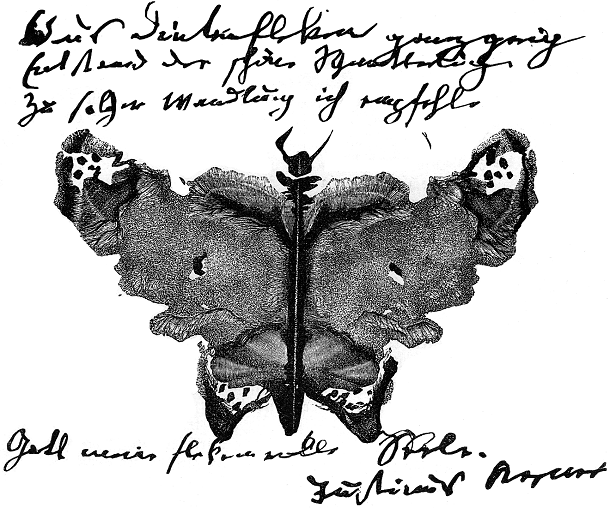 Source: McRenolds, Paul (1975). Advances in Psychological Assessment., Image: Wikipedia
Source: McRenolds, Paul (1975). Advances in Psychological Assessment., Image: Wikipedia The Holtzman Inkblot Technique aimed to address the mountain of criticism associated with the Rorschach test. One of its main differences is its use of a standardized and objective scoring criteria, cutting out much of the ambiguity associated with psychological interpretation in the Rorschach. The Holtzman Inkblot Technique’s score comes from 22 variables, including: reaction time, location (the breaking down of the inkblot into smaller pieces), and sex (the amount of sexual quality reported).
Process Communication Model
 Source: Kahler Communication, Image: Wikipedia
Source: Kahler Communication, Image: Wikipedia The PCM (Process Communication Model) was initially developed for NASA to better screen space shuttle astronauts. Bill Clinton also used it while editing his speeches. This is primarily due to its splitting up of individuals into six personality types: harmonizer, imaginer, persister, promoter, rebel, and thinker. Knowing a person’s personality type, it posits, can help you alter your communication style to become a stronger speaker.
Winslow Personality Profile
 Source: Coaching Results, Image: Wikipedia
Source: Coaching Results, Image: Wikipedia The Winslow Personality Profile measures career success and personal happiness by examining 24 personality characteristics. The test has proven especially useful among professional sports teams, in use today by the NFL (football), NBA (basketball), NHL (hockey), and NLB (baseball) in the United States. It notably helped John Elway sign a football rather than a baseball contract, leading him into a record-breaking football career.
DISC Assessment
 Source: Developments in Business Simulation and Experiential Learning, Image: lumaxart via Flickr
Source: Developments in Business Simulation and Experiential Learning, Image: lumaxart via Flickr The DISC assessment, created by William Moulton Marston, is named after the four behavior types people are believed to exhibit – Dominance, Influence, Steadiness, and Consciences. More practically speaking, the DISC is most often used nowadays in workplaces to measure a person’s suitability for a certain job or position. It is especially useful in predicting how somebody will act in a specific situation, especially a leadership position.



























